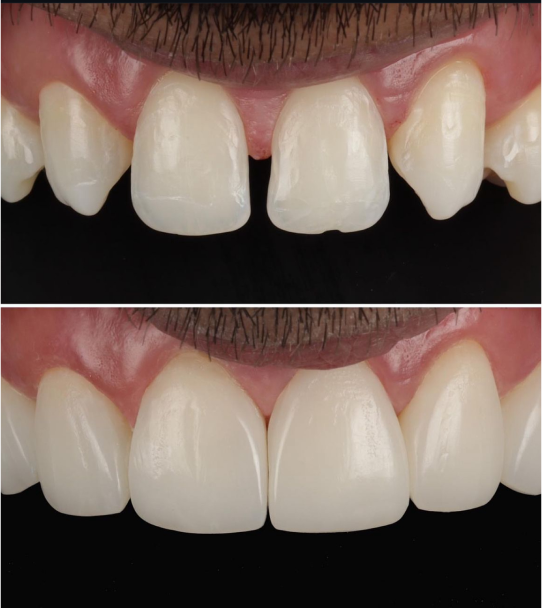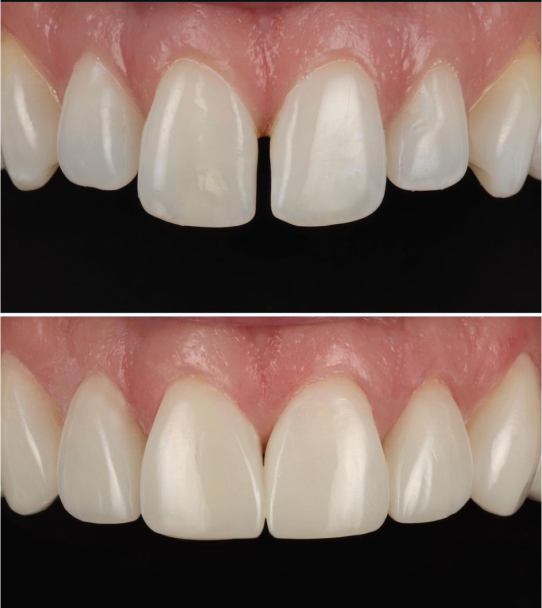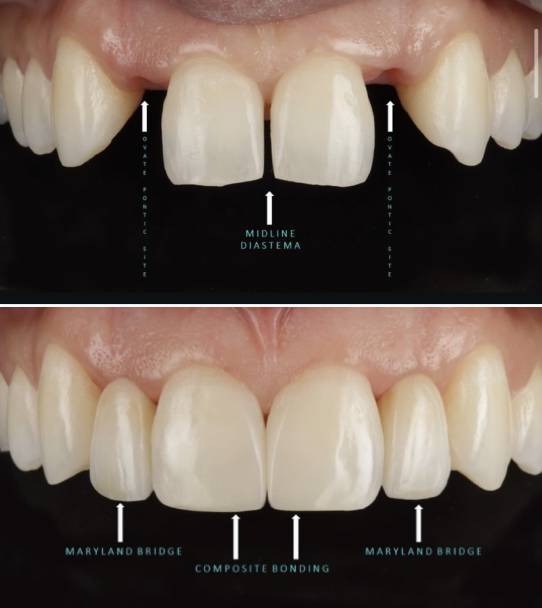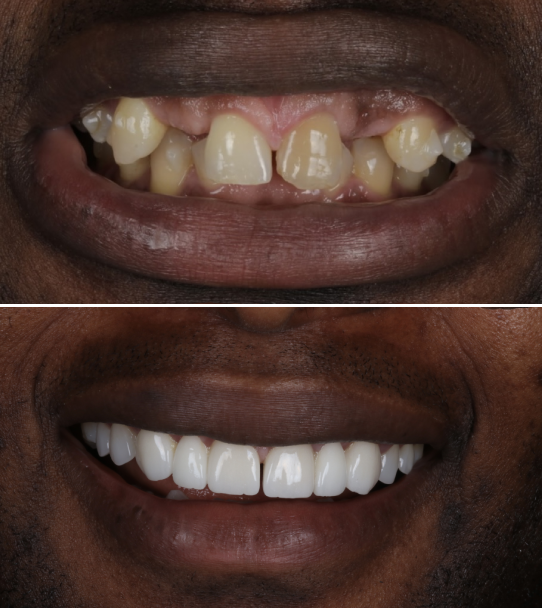Having gap teeth, also known as diastema, can be caused by genetics, tooth size differences, or missing teeth.
While some people love their unique smile, others might feel self-conscious and want a more uniform look.
If you want to close the gaps, there are effective treatments like Invisalign, composite bonding, porcelain veneers or a combination of all three














